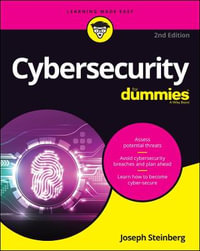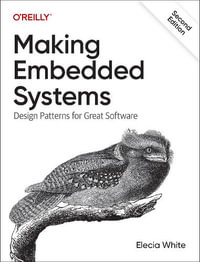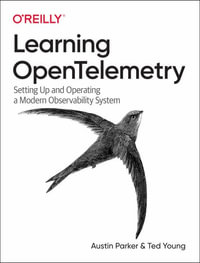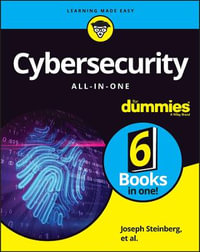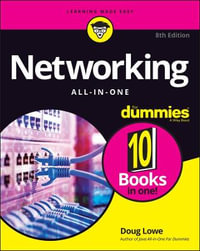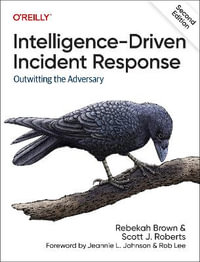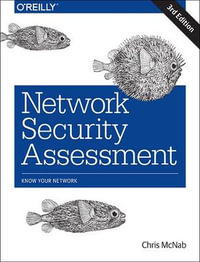| Foreword | |
| Preface | |
| Introduction to Wireless Networking | |
| Why Wireless? | |
| What Makes Wireless Networks Different | |
| A Network by Any Other Name | |
| Overview of 80 2.11 | |
| Networks | |
| IEEE 802 Network Technology Family Tree | |
| 802.11 Nomenclature and Design | |
| 802.11Network Operations | |
| Mobility Support | |
| 802.11 MAC Fundamentals | |
| Challenges for the MACMAC Access Modes and Timing | |
| Contention-Based Access Using the DCF | |
| Fragmentation and Reassembly | |
| Frame Format | |
| Encapsulation of Higher-Layer Protocols Within 80 2.11 | |
| Contention-Based Data Service | |
| Frame Processing and Bridging | |
| 802.11 Framing in Detail | |
| Data Frames | |
| Control Frames | |
| Management Frames | |
| Frame Transmission and Association and Authentication States | |
| Wired Equivalent Privacy (WEP) | |
| Cryptographic Background to WEPWEP Cryptographic Operations | |
| Problems with WEP | |
| Dynamic WEP | |
| User Authentication with 802.1X | |
| The Extensible Authentication Protoco | |
| lEAP Methods | |
| 802.1X Network Port Authentication | |
| 802.1X on Wireless LANs | |
| 802.11i | |
| Robust Security Networks, TKIP, and CCMPThe Temporal Key Integrity Protocol (TKIP)Counter Mode with CBC-MAC (CCMP)Robust Security Network (RSN) Operations | |
| Management Operations | |
| Management Architecture | |
| Scanning | |
| Authentication | |
| Preauthentication | |
| Association | |
| Power Conservation | |
| Timer Synchronization | |
| Spectrum Management | |
| Contention-Free Service with the PCF | |
| Contention-Free Access Using the PCF | |
| Detailed PCF Framing | |
| Power Management and the PCF | |
| Physical Layer Overview | |
| Physical-Layer Architecture | |
| The Radio Link | |
| RF Propagation with 802.11 | |
| RF Engineering for 802.11 | |
| The Frequency-Hopping (FH) PHY | |
| Frequency-Hopping Transmission | |
| Gaussian Frequency Shift Keying (GFSK) | |
| FH PHY Convergence Procedure (PLCP) | |
| Frequency-Hopping PMD Sublayer | |
| Characteristics of the FH PHY | |
| The Direct Sequence PHYs | |
| DSSS and HR/DSSS (802.11b) | |
| Direct Sequence Transmission | |
| Differential Phase Shift Keying (DPSK) | |
| The "Original" Direct Sequence PHY | |
| Complementary Code Keying | |
| High Rate Direct Sequence PHY | |
| 802.11a and 802.11j 5-GHz OFDM PHY | |
| Orthogonal Frequency Division Multiplexing (OFDM) | |
| OFDM as Applied by 802.11aOFDM PLCPOFDM PMD | |
| Characteristics of the OFDM PHY | |
| 802.11g The Extended-Rate PHY (ERP) | |
| 802.11g Components | |
| ERP Physical Layer Convergence (PLCP) | |
| ERP Physical Medium Dependent (PMD) Layer | |
| A Peek Ahead at 802.11n MIMO-OFDMCommon Features | |
| WWiSETGnSync | |
| Comparison and Conclusions | |
| 802.11 | |
| General Structure of an 802.11 | |
| Implementation-Specific Behavior | |
| Reading the Specification Sheet | |
| Using 80 2.11 on Windows | |
| Windows XPWindows 2000 | |
| Windows Computer Authentication | |
| 802.11 on the Macintosh | |
| The Air Port Extreme Card | |
| 802.1X on the Air Port | |
| Using 80 2.11 on Linux | |
| PCMCIA Support on Linux | |
| Linux Wireless Extensions and Tools | |
| Agere (Lucent) Orinoco | |
| Atheros-Based cards and MADwifi | |
| 802.1X on Linux with xsupplicant | |
| Using 80 2.11 Access Points | |
| General Functions of an Access Point | |
| Power over Ethernet (PoE) | |
| Selecting Access Points | |
| Cisco 1200 Access Point | |
| Apple AirPort | |
| Logical Wireless Network Architecture | |
| Evaluating a Logical Architecture | |
| Topology Examples | |
| Choosing Your Logical Architecture | |
| Security Architecture | |
| Security Definition and Analysis | |
| Authentication and Access Control | |
| Ensuring Secrecy Through Encryption | |
| Selecting Security Protocols | |
| Rogue Access Points | |
| Site Planning and Project Managemen | |
| Project Planning and Requirements | |
| Network Requirements | |
| Physical Layer Selection and Design | |
| Planning Access-Point Placement | |
| Using Antennas to Tailor Coverage | |
| 802.11 Network Analysis | |
| Network Analyzers | |
| Ethereal 80 2.11 Network Analysis Checklist | |
| Other Tools | |
| 802.11 Performance Tuning | |
| 80 2.11 Performance Calculations | |
| Improving Performance | |
| Tunable 802.11 Parameters | |
| Conclusions and Predictions | |
| Standards Work | |
| Current Trends in Wireless Networking | |
| The End | |
| Glossary | |
| Index | |
| Table of Contents provided by Publisher. All Rights Reserved. |









